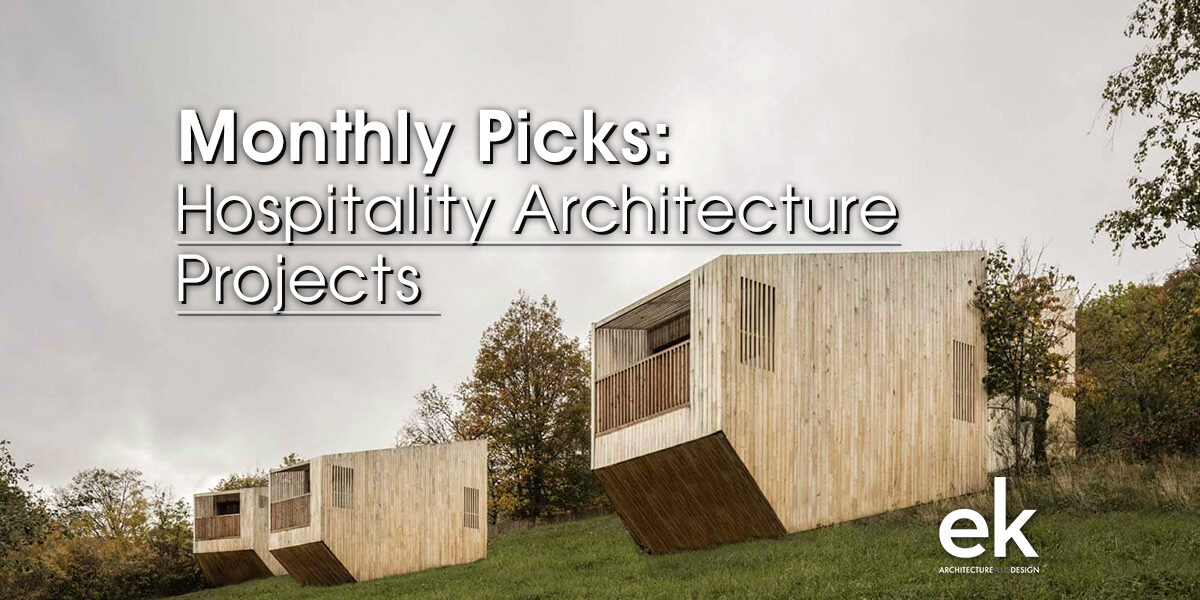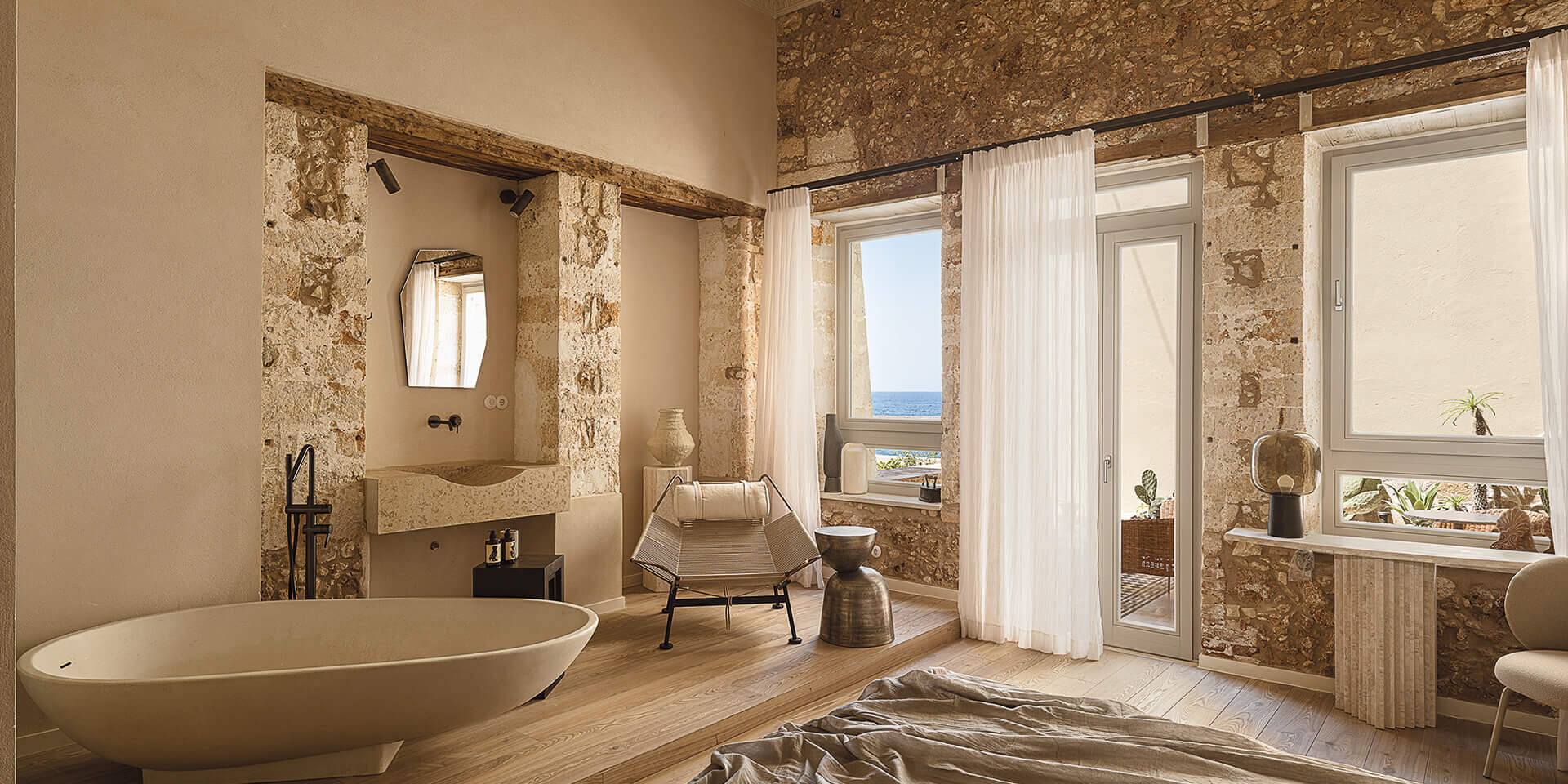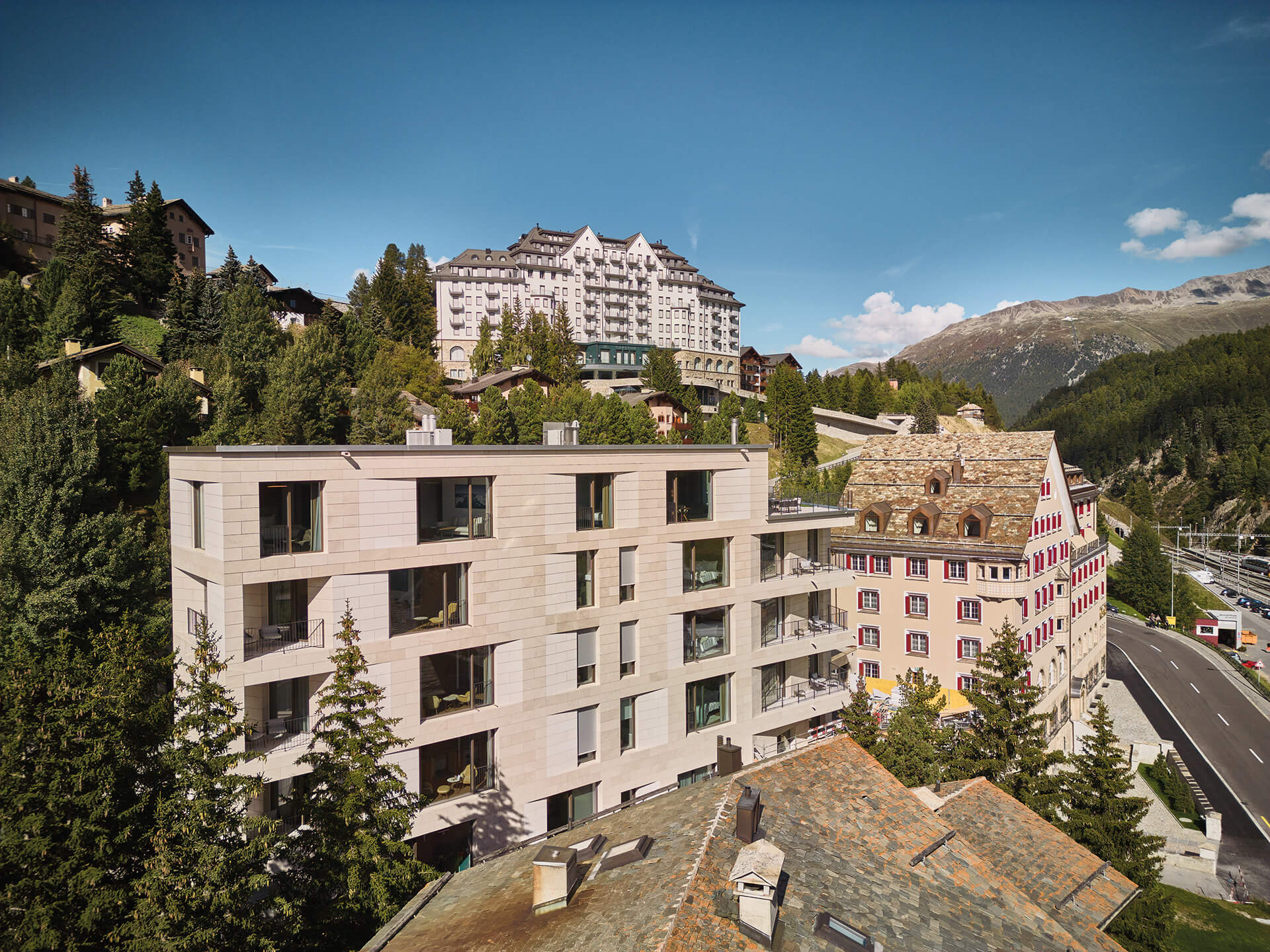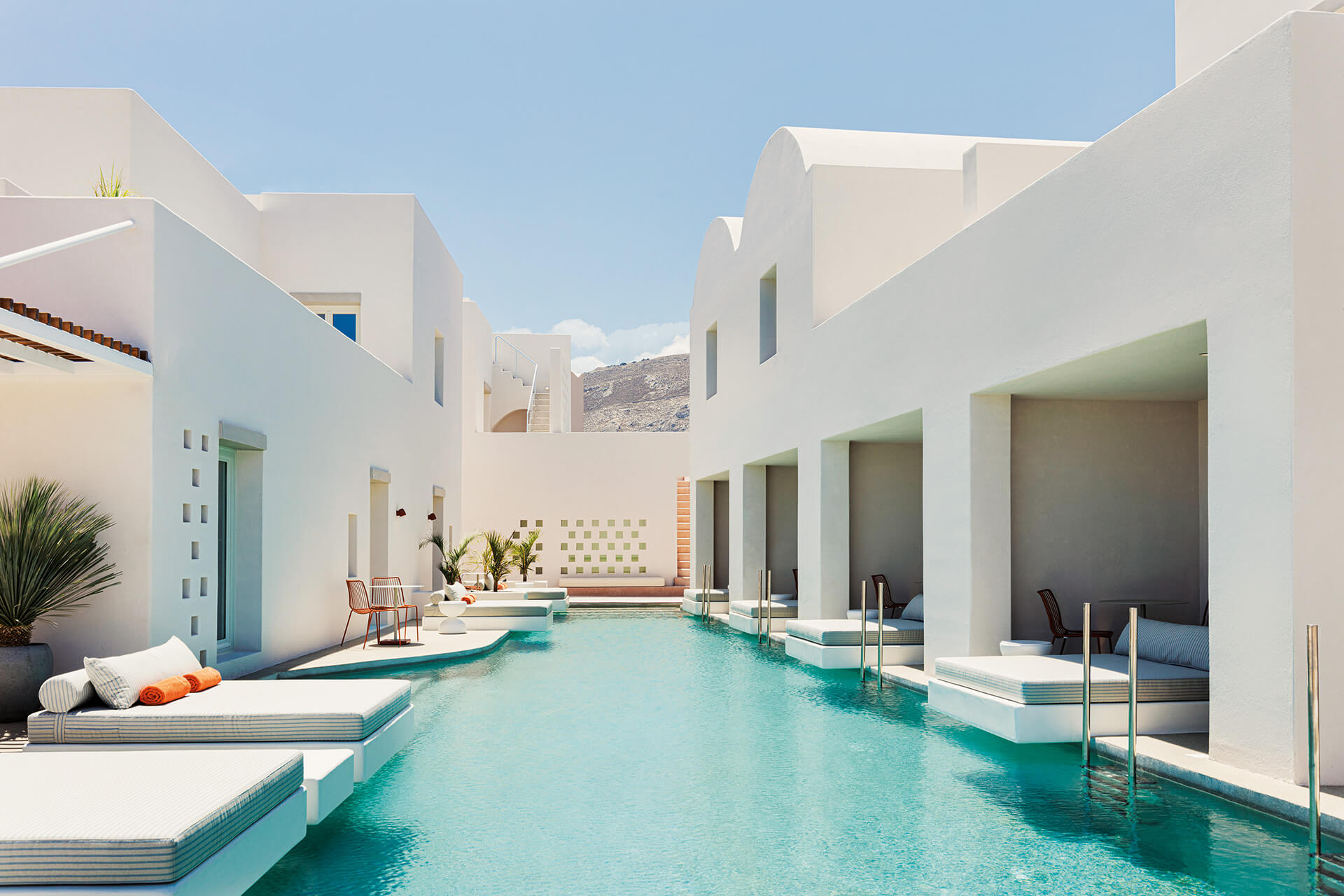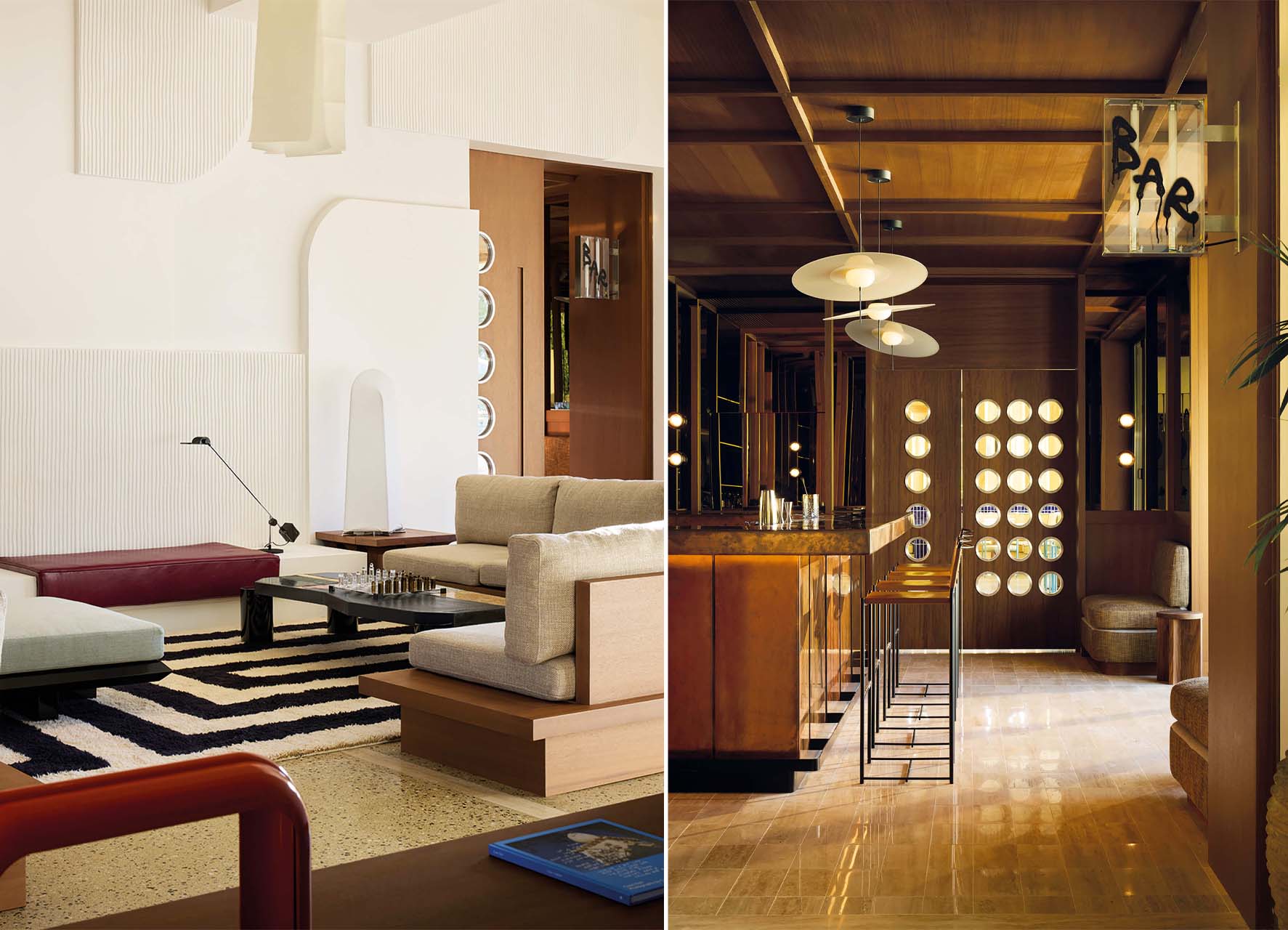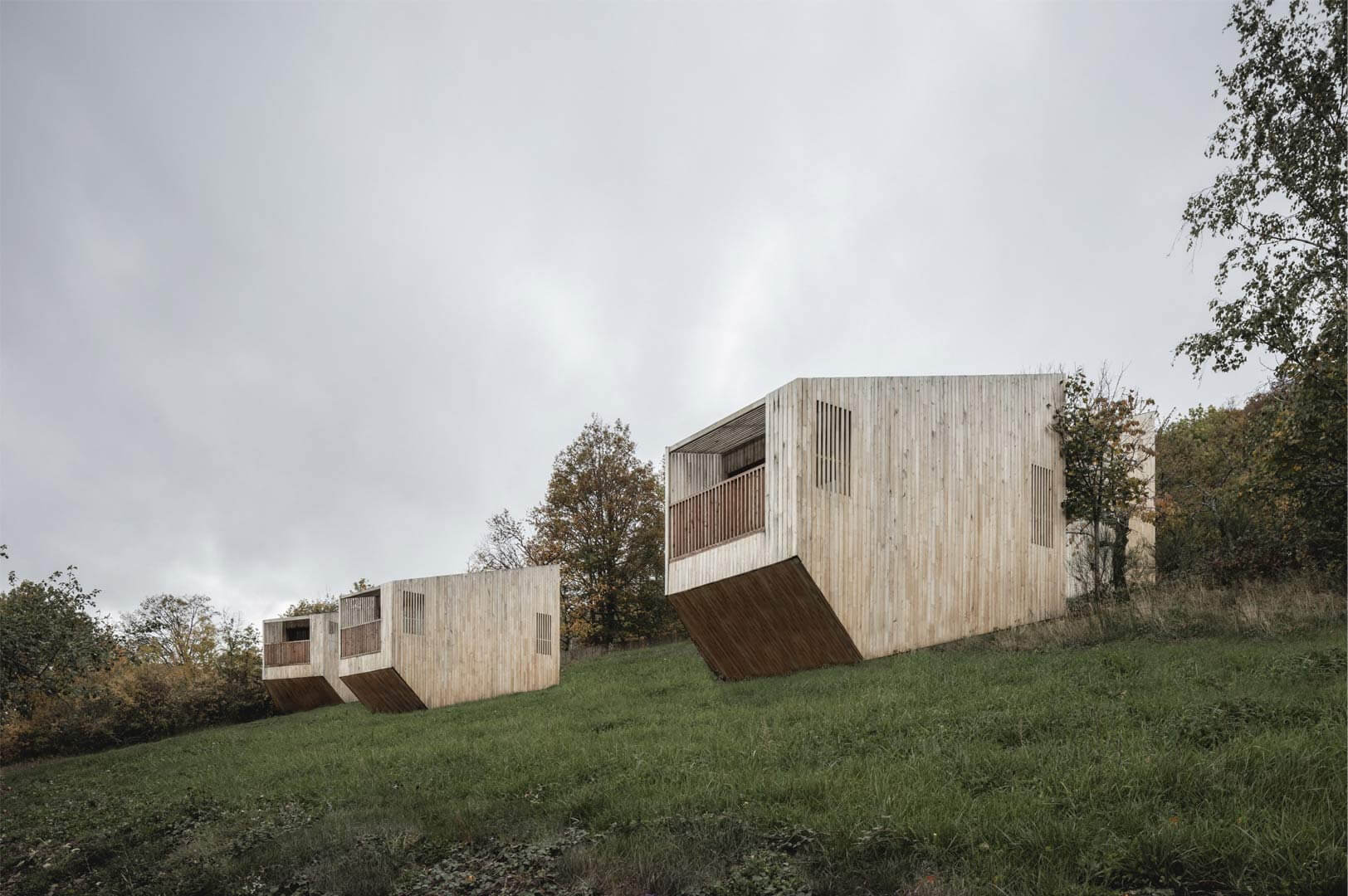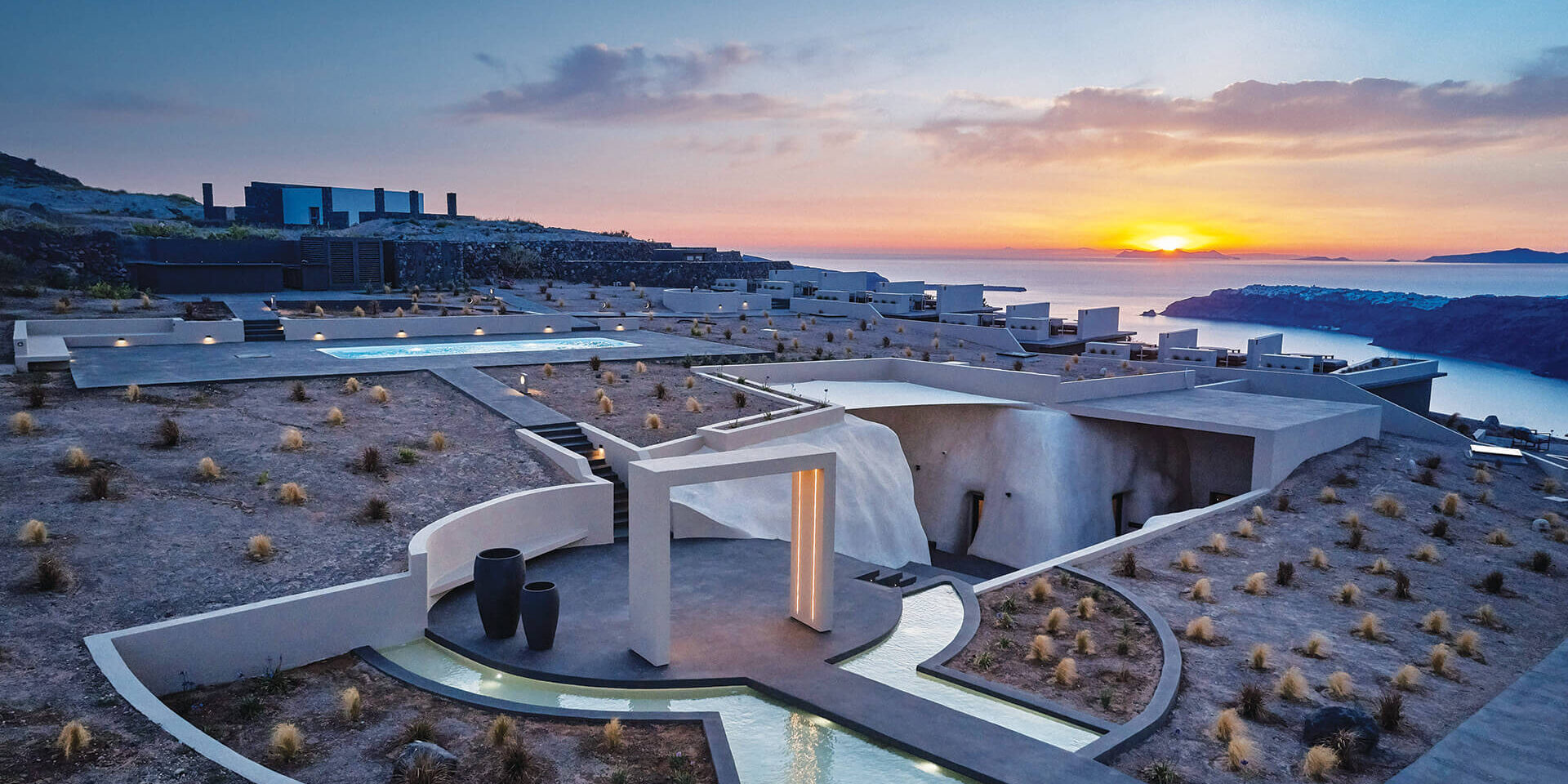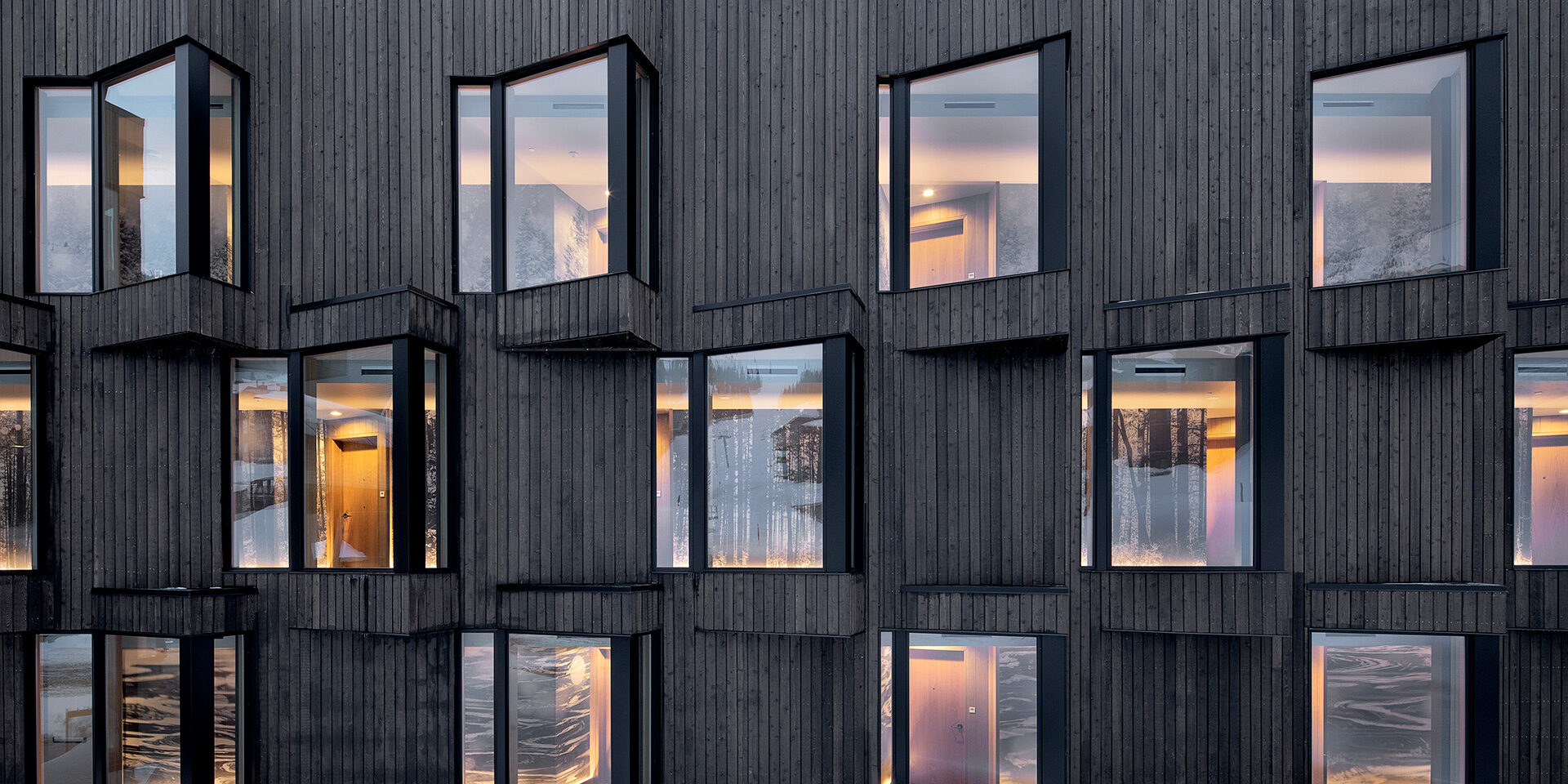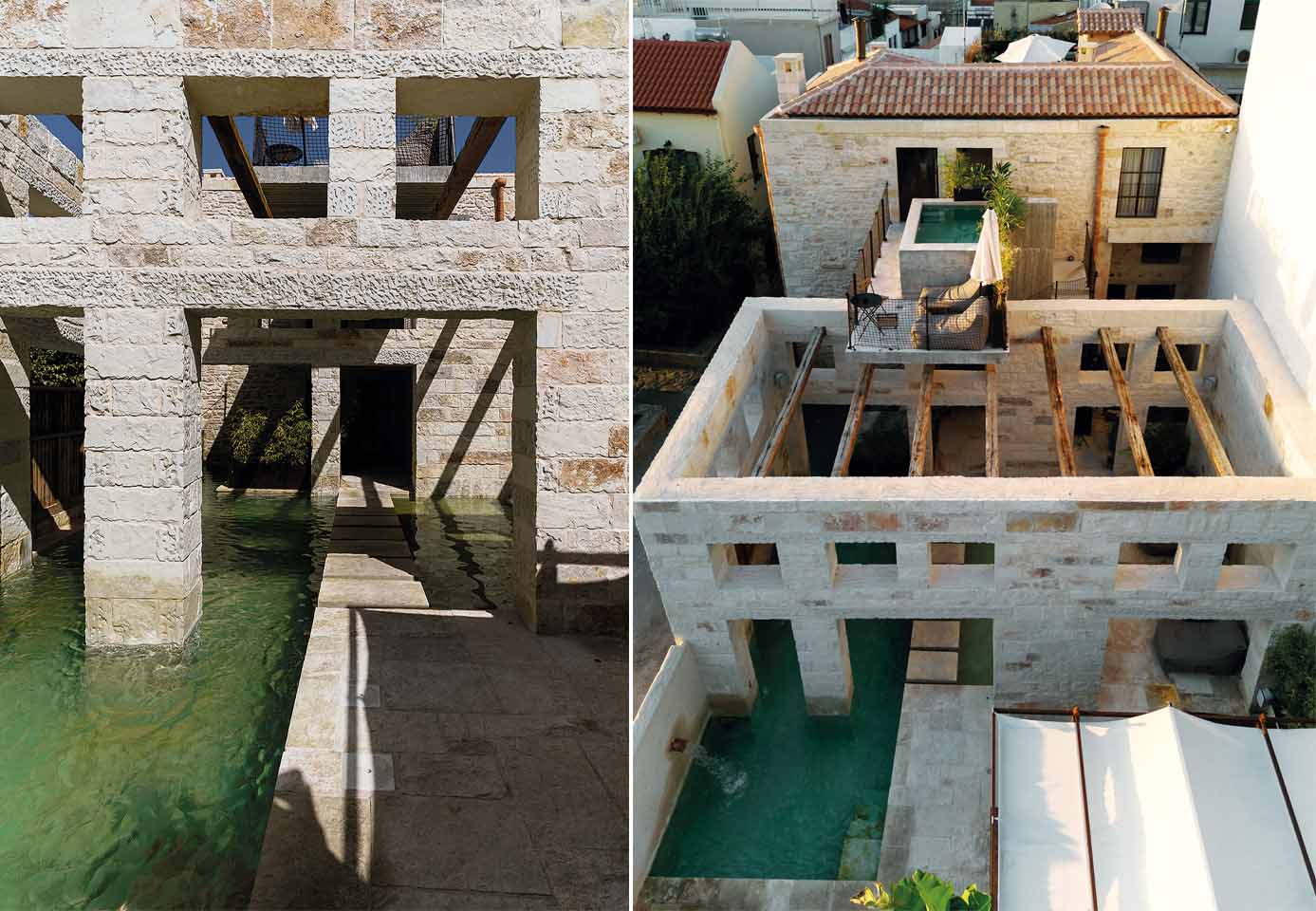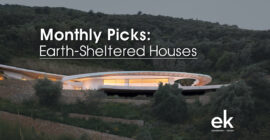The editorial team of ek magazine selected ten architectural projects, featured in past print issues as well as the ek website, that showcase hospitality architecture designs.
The restoration of the listed building by E. Ziller and its transformation into a hotel offered an opportunity to examine the architectural dialogue between new and old. At the core of the design process was the question of how the new interior layer could be articulated with clarity against the pre-existing structure so that the historic elements would remain visually and conceptually prominent. A single gesture within the renovation encapsulates the overall design intent. On the second floor, along the perimeter of the gypsum ceiling decoration, the project’s conservator removed a small section of the later white paint to reveal a rectangular fragment of the original, richly coloured ceiling painting beneath. This intentional “witness” preserves both the authentic layer and the later intervention, making visible the shifting aesthetic preferences of the neoclassical home’s former inhabitants.
The redesign of the interior of Minos Palace Resort aimed to create an experience that activates emotion and the senses, marking the transformation of a traditional hospitality space into a curated world of emotional, physical, and spiritual renewal. Designed as a “place of well-being,” the project reflects the international shift toward a lifestyle model grounded in scientific principles and serving as the foundation of a comprehensive hospitality experience. The brief called for the redesign of the common areas and wellness spaces as immersive, safe environments for personal transformation. The masterplan was implemented in two phases: first with the renovation of the lobby, restaurant, bar, and pool lounge, and later with the development of Nao, the emotional core of the resort. The design translated the journey of self-awareness into an architectural experience through open-air panoramas, serene interiors, and earthy tones that evoke calm.
ek Issue: 295 | March 2025
The traditional guesthouse occupies one of the most iconic buildings in the Old Town of Chania, dating back to the late 16th or early 17th century. The structure has been meticulously restored to preserve and showcase its historical character. Distinguished by the original stone columns on its façade, Aisha exudes a unique charm, specifically a refined blend of architectural influences that narrates the rich history of the area. The hotel features seven suites, five on the ground floor and two on the upper level, each named after the original function of the space in the historic building. The new layout embraces natural materials such as stone, wood, marble, and metal, while an earthy, neutral palette ensures a sense of warmth and luminosity. The design philosophy is rooted in the harmonious coexistence of old and new, aiming to evoke a subtle sense of nostalgia while offering contemporary comfort and elegance.
04. Grace La Margna St. Moritz Hotel Extension and Renovation | Divercity Architects
ek Issue: 297 | May 2025
The iconic Grace La Margna hotel, located on the main street of St. Moritz, has reopened its doors following an extensive renovation and expansion. The project breathes new life into a landmark dating back to 1906, originally designed by Swiss architect Nicolaus Hartmann, and elegantly bridges its historic legacy with a contemporary aesthetic. Hartmann’s original design balanced Art Nouveau influences with the traditional Heimatstil style, highlighting authenticity and local craftsmanship at a time when St. Moritz’s architectural scene was marked by eclecticism. Perched on the slopes of the Engadin valley, the hotel enjoys a strategic location next to the town’s historic railway station, a UNESCO World Heritage Site, and offers panoramic views of the surrounding glaciers and alpine landscape.
The hotel is situated in the seaside village of Kamari, near the coast of Santorini. It offers views to the north-east, overlooking the sea, and to the south-west, with a stunning perspective of the Profitis Ilias mountain. The building is situated on a corner plot and comprises two floors, with a basement level for ancillary uses. The ground floor features the reception area, a restaurant-bar, and eight rooms, while the first floor contains an additional seven rooms. The main entrance is located on the south-western side of the building, accessible via the municipal road, leading directly to the reception area. The restaurant-bar and rooms on both floors are reached through open and semi-covered corridors and staircases, primarily positioned along the perimeter of the complex.
The new hotel and swim club on the Glyfada waterfront was created through the complete transformation of a 1970s building complex. The renovation preserves the distinctive character of the era while meeting the highest contemporary hospitality standards. By showcasing the vibrancy and diversity of the modern Athenian creative scene and incorporating iconic works of international art and design, the hotel becomes not only a destination for visitors but also a cultural landmark for locals. The building comprises two interconnected wings of different heights, both of which underwent extensive structural, functional, and energy upgrades to enhance safety, improve energy performance, and ensure accessibility for people with reduced mobility.
The project offers a holistic and authentic eco-tourism experience inspired by Scandinavian traditions, with a strong emphasis on local culture. Located in Alsace, it combines Scandinavian influences with the region’s culinary heritage, wellness practices, and nature-centered lifestyle to create a fully immersive experience. Positioned on a hillside above the village of Breitenbach, the hotel reinterprets the traditional Scandinavian hytte, a place for retreat, solitude, and reconnection with nature. Set within a protected Natura 2000 landscape, the development is designed to integrate gently into its surroundings.
The hotel, entirely carved into the earth, is located in Imerovigli, the settlement at the highest point of the caldera. It was developed within existing caves with the intention of offering a contemporary interpretation of the traditional cave-dwelling experience. The main concept revolves around an organic, shell-like form that flows through the space and shapes the boundaries of the carved structure. This idea is emphasized through the use of a single material across all surfaces, softening transitions and adopting a color palette that echoes the natural stone of the existing caves. At the street entrance, a sharp-angled volume made of perforated masonry directs visitors toward the interior.
This new destination hotel represents the next evolution in mountain architecture: familiar forms reimagined through a composition of precision-fabricated natural materials for a 21st century solution. Located 1.5 hours northeast of Spokane and set within the Rockies of Northern Idaho at the nexus of two distinct ranges, the Selkirk and Cabinet Mountains, the location offers ready access to year-round recreation opportunities. Developing a masterplan for future development, including the hotel and support facilities, the design redefines the mountain experience. Leveraging the properties of mass timber construction -beauty, sustainability, and structural efficiency- the complex brings together tradition and innovative materials in a contemporary, future-forward expression.
The hotel is housed in an existing 19th-century stone structure in the heart of Rethymno’s old town and consists of five suites offering all contemporary comforts. The design aims to immerse visitors in elements of Cretan culture, offering an atmosphere where the evocative character of the past coexists with contemporary sensibilities. During the adaptive reuse of the original shell, the stone masonry was highlighted and preserved, with targeted structural reinforcements where necessary. To maintain the authenticity of the original character, all mechanical and electrical systems were concealed within the walls and floors. A new stone structure was created on the adjacent plot, centered around the presence of water, forming the hotel’s shared pool and introducing a sense of oasis within the dense fabric of the old town. The two stone volumes are connected by a staircase made of exposed concrete.
